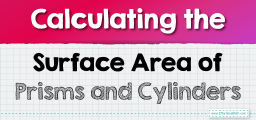Unlocking the Secrets of Inscribed Polygons
In the vast realm of geometry, one of the enchanting dances is that of polygons nestled perfectly within circles. These are the inscribed polygons. From squares and pentagons to hexagons and beyond, understanding how these figures inscribe within circles offers a deeper appreciation for the symmetries and harmonies in mathematics. In this blog post, let's unravel the fascinating connections between polygons and the circles they inhabit.

Step-by-step Guide: Inscribed Polygons
Definition:
- Inscribed Polygon: A polygon is said to be inscribed in a circle if all its vertices lie on the circle. The circle is then called the circumscribed circle of the polygon.
Basics of Inscribed Polygons:
- Any side of the inscribed polygon is also a chord of the circle.
- The angle subtended by a chord at the center is double the angle subtended by it at any point on the remaining part of the circle. This becomes particularly interesting for inscribed polygons.
Properties of Inscribed Polygons:
- The sum of the opposite angles of any quadrilateral inscribed in a circle is \(180^\circ\).
- In an inscribed triangle, the length of its sides can determine the circle’s radius using certain relationships, such as the circumradius formula.
Examples
Example 1:
A square is inscribed in a circle with a radius of \(5 \text{ cm}\). What is the length of the diagonal of the square?
Solution: The diagonal of the square will pass through the center of the circle and will thus be equal to twice the radius. So, the diagonal is \(2 \times 5 \text{ cm} = 10 \text{ cm}\).
Example 2:
In a circle, a regular pentagon is inscribed. If one of its sides measures \(6 \text{ cm}\), can you determine the radius of the circle?
Solution: Let’s call the circle’s radius \( r \). Drawing a radius perpendicular to a side of the pentagon bisects that side. Using simple trigonometry, in the resulting right triangle, we can say:
\(
\cos(36^\circ) = \frac{3}{r}
\)
Solving for \( r \) gives:
\(
r = \frac{3}{\cos(36^\circ)}
\)
Computing this, the radius is approximately \(3.73 \text{ cm}\).
Practice Questions:
- A regular hexagon is inscribed in a circle of radius \(4 \text{ cm}\). What is the length of one side of the hexagon?
- An equilateral triangle is inscribed in a circle. If one side of the triangle is \(9 \text{ cm}\), can you determine the circle’s radius?

Answers:
- Each side of the hexagon is equal to the chord of the circle subtended by \(60^\circ\). Using the formula for chord length: \( c \approx 2 \times 4 \times \sin(30^\circ) = 4 \text{ cm}\).
- For an equilateral triangle inscribed in a circle with a side length of \(9 \text{ cm} \), by using the Pythagorean theorem on the right triangle formed with the radius and half the triangle’s side, the circle’s radius is determined to be \(3\sqrt{3} \text{ cm} \).
Related to This Article
More math articles
- Intelligent Math Puzzle – Challenge 85
- What time do SAT Scores Come out?
- The 5 Best Computers For College Students
- Identify Lines of Symmetry
- Objects on a Coordinate Plane
- ISEE Upper-Level Math Worksheets: FREE & Printable
- How to Get Better at Math: 7 Comprehensive Tips for Parents with Kids Struggling
- SIFT Math Formulas
- Full-Length HiSET Math Practice Test-Answers and Explanations
- Top 10 5th Grade MAP Math Practice Questions


























What people say about "Unlocking the Secrets of Inscribed Polygons - Effortless Math: We Help Students Learn to LOVE Mathematics"?
No one replied yet.